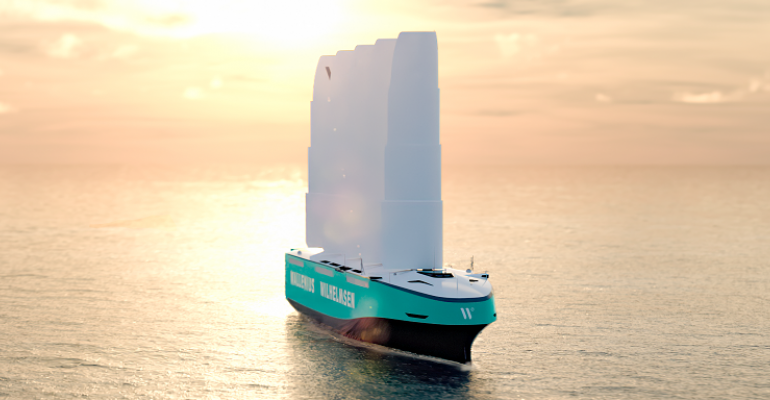The Orcelle Wind project’s specifications are not yet finalised, but the company gave indicative specifications of a 7,000-vehicle capacity, flexibility to carry breakbulk cargo and heavy machinery, and a length of around 220 metres.
The company cited regulatory pressure and the expectations of its stakeholders as driving forces behind the project, with a need to align commercial and sustainability goals.
Wallenius Wilhelmsen said it has extensively mapped port restrictions for the project, with a goal of operating and trading globally. The company has yet to decide whether wind-powered vessels will be part of its existing fleet or a separate operation, but it will focus on Atlantic and Pacific routes during development as they believe those routes hold the best emissions reduction potential.
One key compromise in the vessel’s offering is its speed, with expected speeds of 10-12 knots under sail, speeds not disimilar to a 19th century clipper class merchant saling vessel. The company sees opportunities elsewhere within the supply chain to minimise the impact of slower ocean transits, by focusing on bottlenecks in the current “hurry up and wait” system where each part of the logistics chain rushes vehicles through only for them to sit in storage.
Erik Noeklebye, EVP & COO Shipping Services said “The standard service speed will be reduced from current conventional vessels. We will not be able to tackle the climate challenge that is already upon us without thinking differently about how we plan and operate supply chains.
“Reducing emissions from shipping to levels we know are required will have to balance speed of transportation with smarter planning of the full supply chain to ensure we can maintain an optimal service delivery to the final consumer.”
Wallenius Wilhelmsen has yet to finalise the additional propulsion system for when wind power is insufficient or impractical, but said zero-carbon fuels are key to its long term plans. Aside from wind power, “Orcelle Wind will be our technical and operational testbed for zero-emission innovation where we can assess and develop various zero emission fuels and technologies,” said Noeklebye.

The company aims to have designs ready to tender to shipyards in mid-2022, with the vessel scheduled to enter service in 2025.
The air draft of the vessel will be 100 metres with the sails raised and 50 metres with them retracted. The approach to reducing air draft and windage when needed—for instance in port and during canal transits—has yet to be determined, but one idea is to have the top sections of the sails telescope down into the base.
The announcement webinar included supportive messages from Wallenius Wilhelmsen customers and partners, including car makers BMW, Mercedes-Benz and Volvo. Norwegian Prime Minister Erna Solberg offered her support in a pre-recorded message, saying: “The potential to reduce emissions by up to 90% compared to vessels with diesel engines is very promising.”
Copyright © 2024. All rights reserved. Seatrade, a trading name of Informa Markets (UK) Limited.
Add Seatrade Maritime News to your Google News feed.  |

